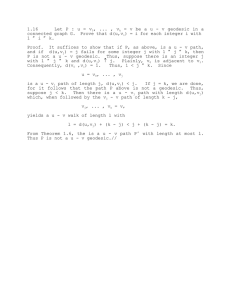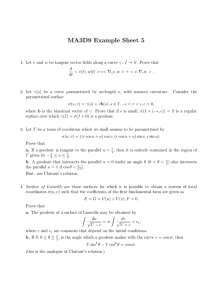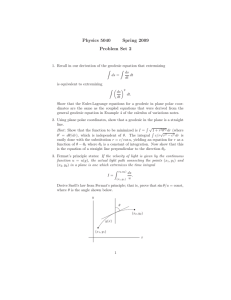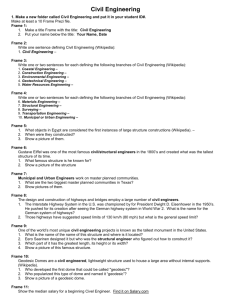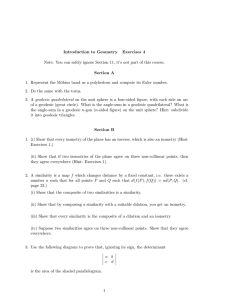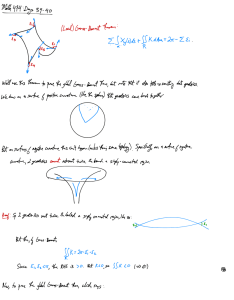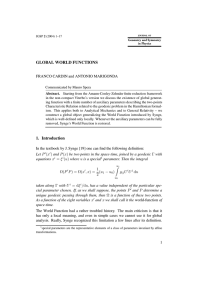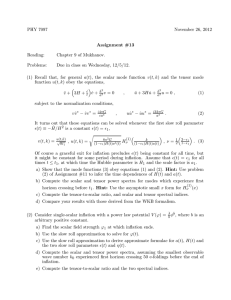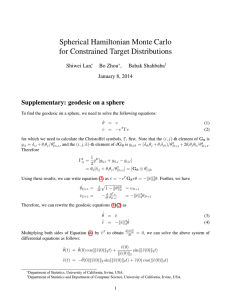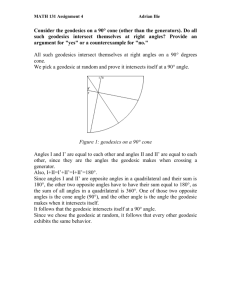In mathematics, a geodesic /ˌdʒiəˈdɛsɪk, -ˈdisɪk/[jee-uh-des
advertisement
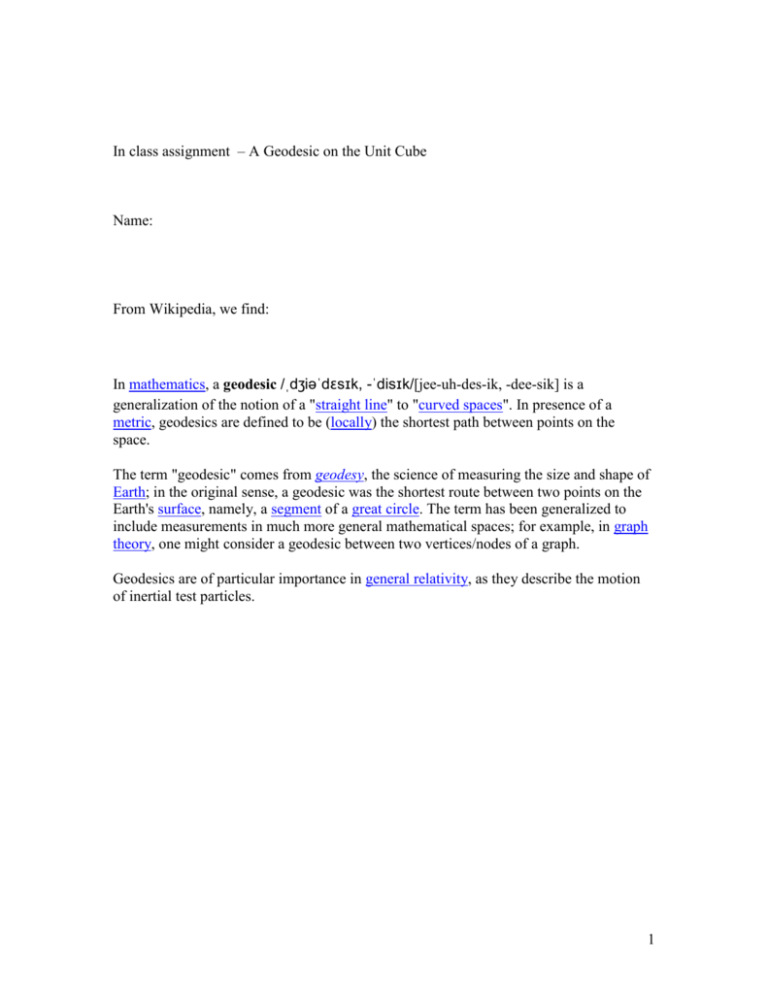
In class assignment – A Geodesic on the Unit Cube Name: From Wikipedia, we find: In mathematics, a geodesic /ˌdʒiəˈdɛsɪk, -ˈdisɪk/[jee-uh-des-ik, -dee-sik] is a generalization of the notion of a "straight line" to "curved spaces". In presence of a metric, geodesics are defined to be (locally) the shortest path between points on the space. The term "geodesic" comes from geodesy, the science of measuring the size and shape of Earth; in the original sense, a geodesic was the shortest route between two points on the Earth's surface, namely, a segment of a great circle. The term has been generalized to include measurements in much more general mathematical spaces; for example, in graph theory, one might consider a geodesic between two vertices/nodes of a graph. Geodesics are of particular importance in general relativity, as they describe the motion of inertial test particles. 1 Exploration: A Common Cube Conundrum Suppose one desired to move along the surface of the unit cube from the top far corner (point A) to the near bottom corner (point B). Would the dark line path marked in the picture be the shortest route from point A to point B? A. If you agree, justify your answer; use the new vocabulary in your answer and tell how long the geodesic is. If you do not agree, describe the actual geodesic and justify your answer in a mathematical way. Compare the suggested route with yours and argue mathematically that yours is the shorter route. In either case, find both the exact length using algebra and an approximation from your calculator. B. Come up with at least 3 ways to show your conclusion: one with manipulatives, one with algebra, and one of your own choosing. Compare your ways with those of your classmates. What are the good points of each person’s approach? The attached graph paper is helpful for at least one approach…you might raid the cupboards, too. C. Can you argue that the exact answer, the manipulative approach, and the approximation are both the same and different? What do you get from each approach? Is one better than the other? Did you find that someone in class had an approach that you would never have thought of? 2 Graph paper. 12 11 10 9 8 7 6 5 4 3 2 1 2 4 6 8 10 12 14 16 18 20 22 24 3 Answers: A: The shortest route is: 4 B: Some ideas for demonstrating this are: 5
